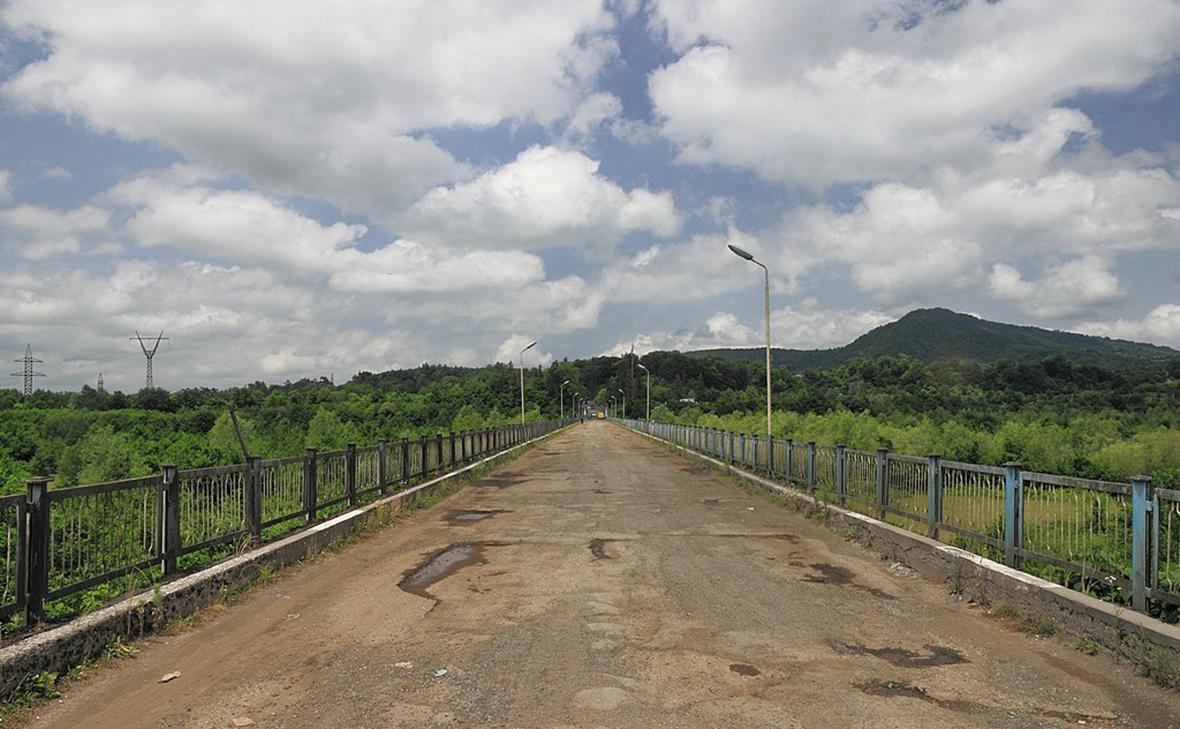Extraordinary consequences from ordinary hail
People couldn’t find their plots of land
Hrachik Muradyan, an agronomist in Lernamerdz community who is well-aware of all the agricultural plots in the village and who knows what and is planted and where, is now having trouble finding where the corn or gourds had been growing. Moreover, he couldn’t find his own plot of corn. In the orchards, he has to examine the trees at a close distance, so as to figure which fruits are growing on them.

The hail from a couple of days ago didn’t just damage crops, but also leveled the plants to the ground. In some places the windstorm blew the leaves off of the trees, whereas in other places it uprooted the trees themselves. Almost the whole harvest of grapes has been destroyed.
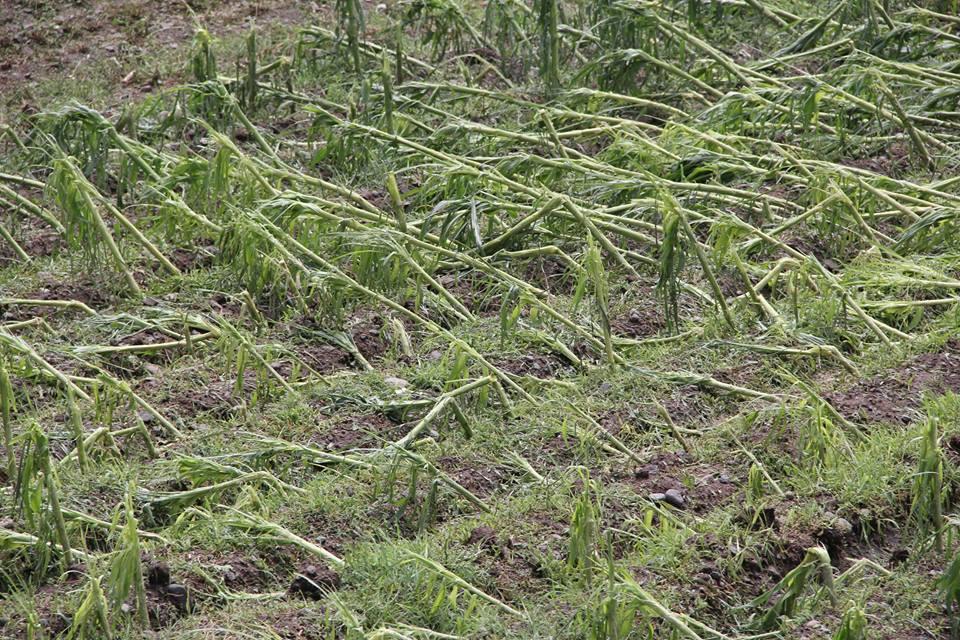
The scope of the disaster
Walnut-size hail, accompanied by a windstorm, hit the Armavir district late on July 10 and early the next day. As a result, about 40 communities have lost from 70% to 100% of their crops.

The hail storm came as a surprise to the villagers. It’s an unheard-of phenomenon here in July, when nearly all the crops are being harvested. The is a risk of hail-especially on such a destructive scale-in May, as it occurred, for example, on May 12, 2013.

Of the areas hit by the hailstorm, as indicated by farmers, the ones where no anti-hail stations or where their number was insufficient were most effected. They say that if these anti-hail stations had been installed, they could have cut the damage in half.
The aftermath of the 2013 hailstorm
The need to install anti-hail stations was put on the agenda after a heavy hailstorm impacted the farming economies of the 47 communities in the Armavir district by almost 100%. Their past experience made it clear that when cumulonimbus clouds were making their way towards the Armavir district from neighboring Turkey, it was time to install the anti-hail stations at the district’s southern border.

In 2013, the number of anti-hail stations doubled and totaled 172. However, a similar disaster has just occurred and the area affected by the hailstorm increased.
Why the anti-hail stations weren’t able to avert the blow
According to Ashot Ghahramanyan, the governor of the Armavir district, the efficiency of the anti-hail stations is 50-60% and the 4,000 installations are required to cover the entire area of the district. In addition to this, based on previous experience, the anti-hail stations had been put along the perimeter of the southern border, whereas this time the cloud penetrated the district from the most unprotected direction-the north.

Hail, accompanied by wind and a rainstorm
In 2012, after the heavy rain and sewage water flooded the farming economies in 12 northern communities in the district, a special program was developed and additional funds were sought out for the rehabilitation of the storm water sewage system.
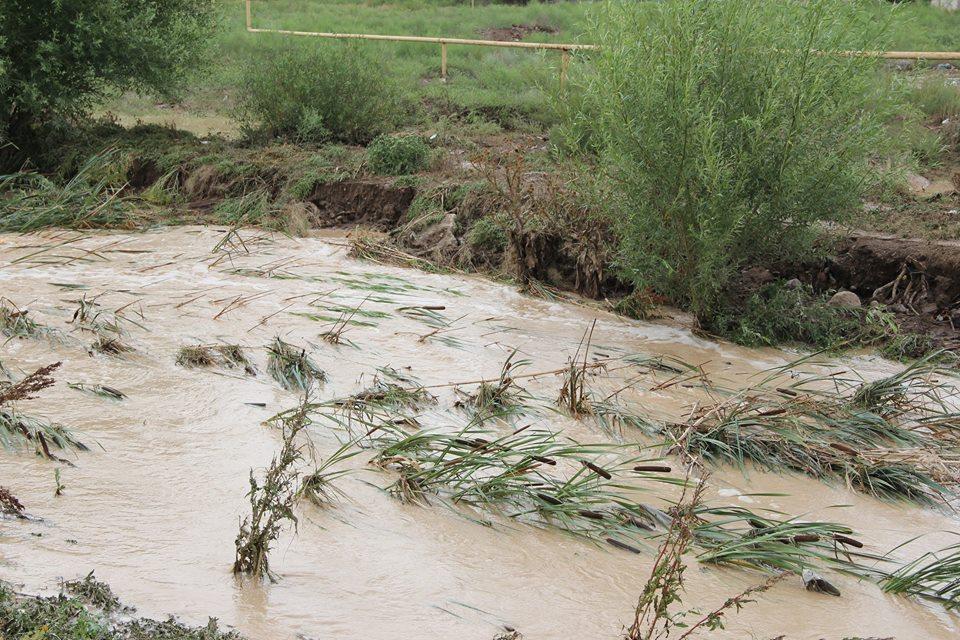
The same thing happened again four years later: the crop fields were flooded by storm water again. As had happened before, this year the disaster primarily affected five communities, including Aknalich. According to the head of the community, Gevorg Misakyan, the government had been considering this issue all that time.

As far as he knows, the funds had been allocated for that purpose, but the drainage system was not put into use. As a result, the system comes into disrepair each time it rains and the farms are flooded with water.
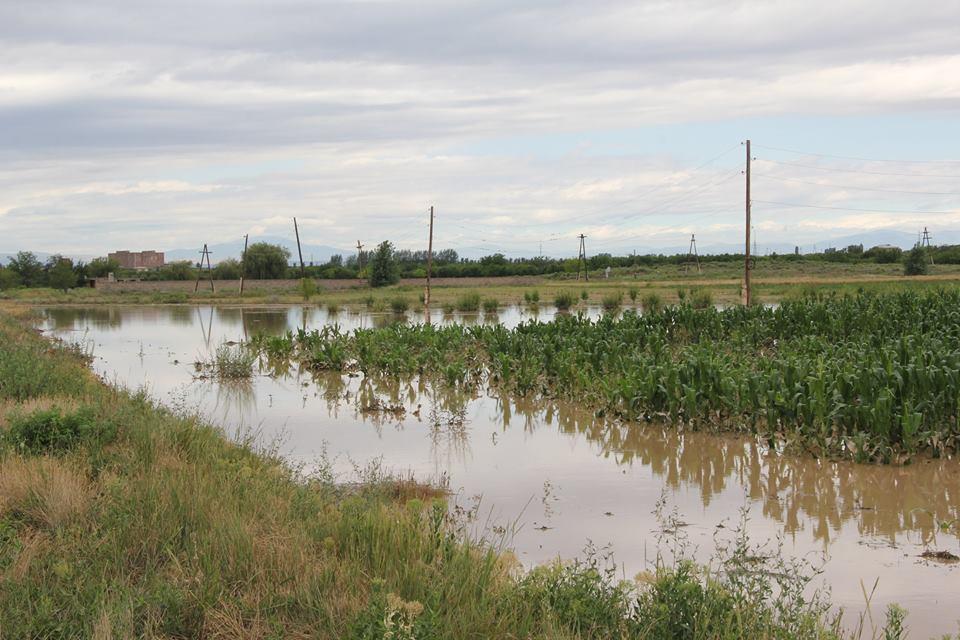
Farmers’ demand
90% of the affected communities’ farming economies are on credit, which means that these people not only have to provide for their families, but also to pay off the interests from bank loans.
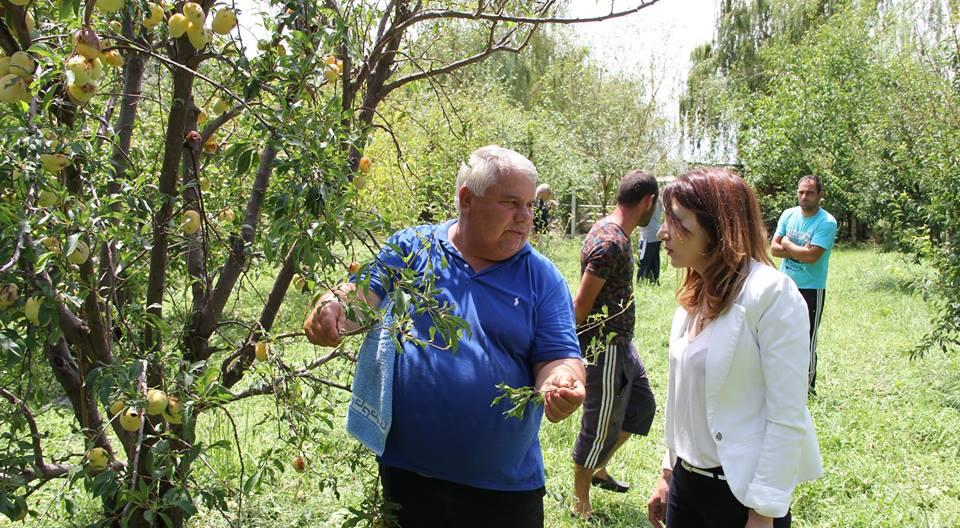
For example, Hrachik Muradyan provides for a 12-member family on the proceeds gained from selling corn harvested from a 3 ha. plot of land. He said it is enough to survive in winter and organize the necessary jobs in the fields in Spring. Whereas now, he has to cover this agricultural credit with no income at all.
Farmers are unanimous in the opinion that this problem can be solved only with the government’s assistance, otherwise the courts will be overly busy considering the banks’ claims for the seizure of assets.
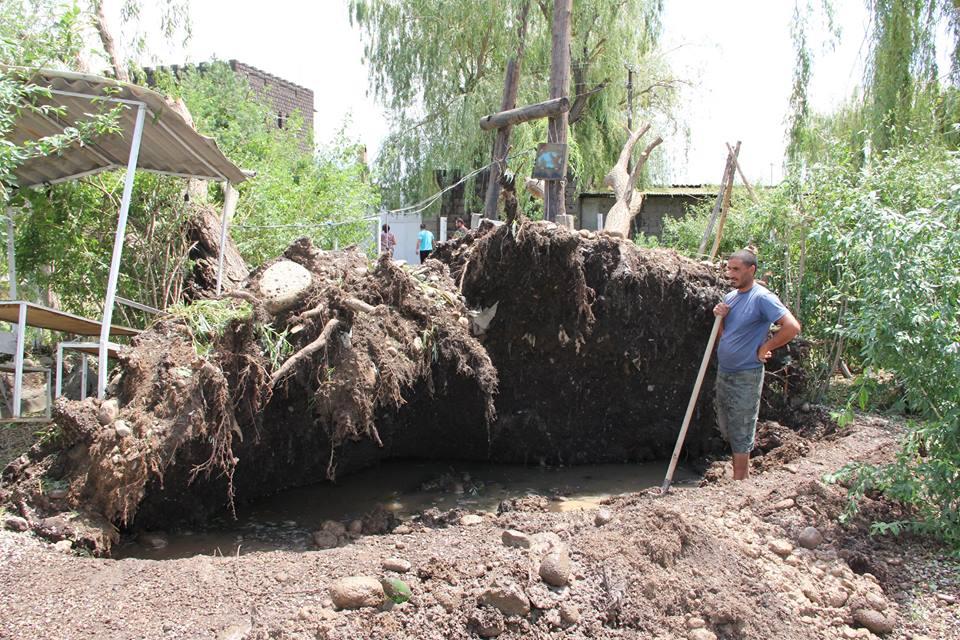
The people demand that their current loans be frozen and they be provided with new opportunities to recover the damaged orchards. The farmers also insist that the government should exempt them from this year’s land tax and write off the irrigation water charges.
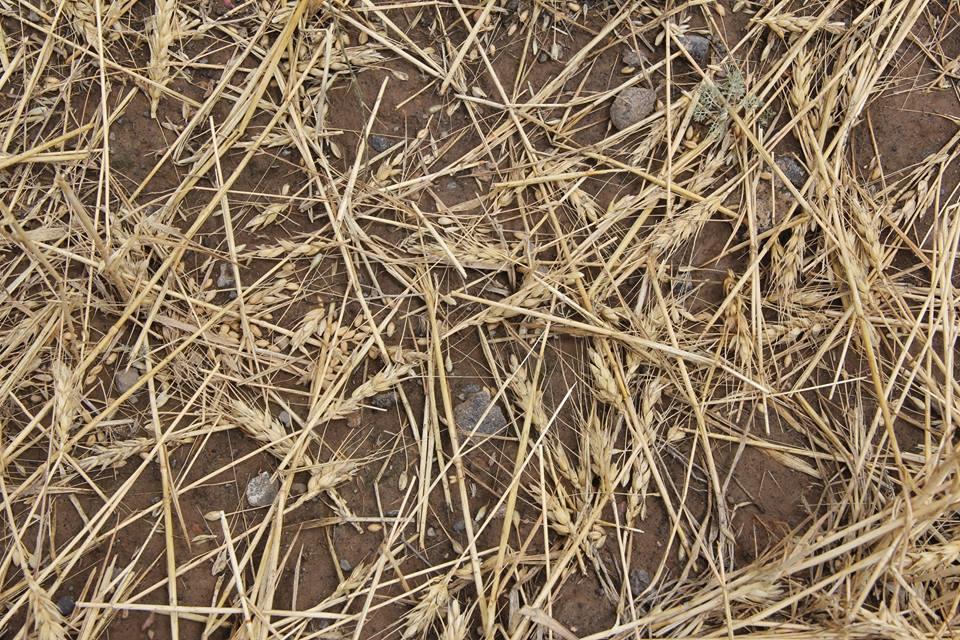
According to the Armavir governor, the residents’ demands are quite fair. In this regard, a special commission has been set up to estimate the extent of the damage to each farming economy, while accounting for cultivated crops. In addition, the heads of the communities have been tasked to clarify, within shortest time possible, the types and amounts of credits issued to the farmers. In the governor’s words, the authorities will make the final decision only after getting answers to all of these questions.
The government’s position
The government has already estimated the damage inflicted by the disaster and discussed future preventive measures.The discussion particularly focused on a clause related to the allocation of 104 million AMD (about $220,000) for preventive purposes, i.e. for the procurement of 28 anti-hail stations, including which are to be mounted in the Armavir district.
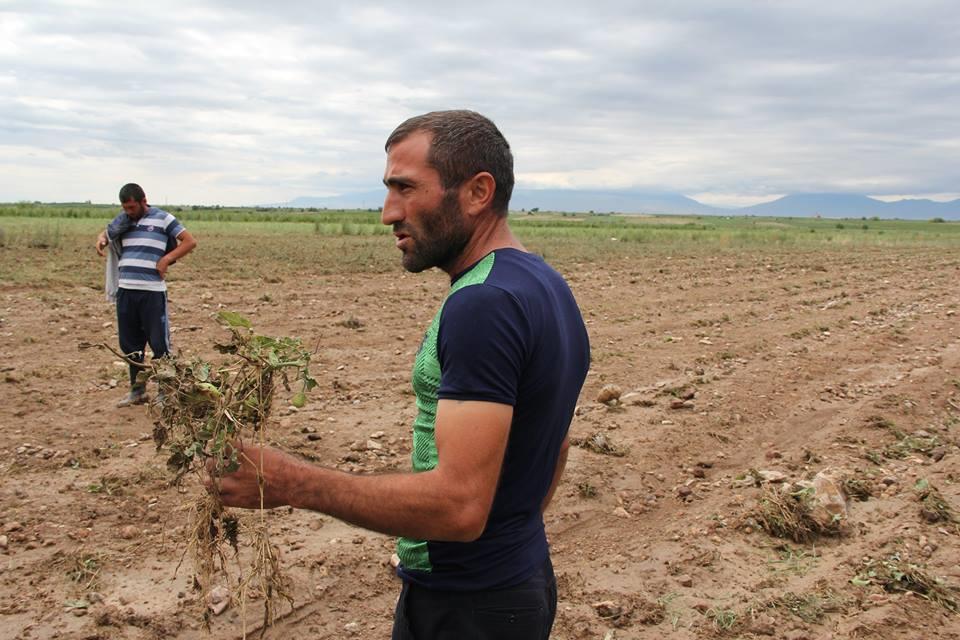
The issue of giving assistance to the affected economies is still being discussed. As far as the agricultural loans are concerned, the government has requested the Central Bank to launch negotiations with the commercial banks to postpone loan payments for at least one year.
Published: 28.07.2016
















